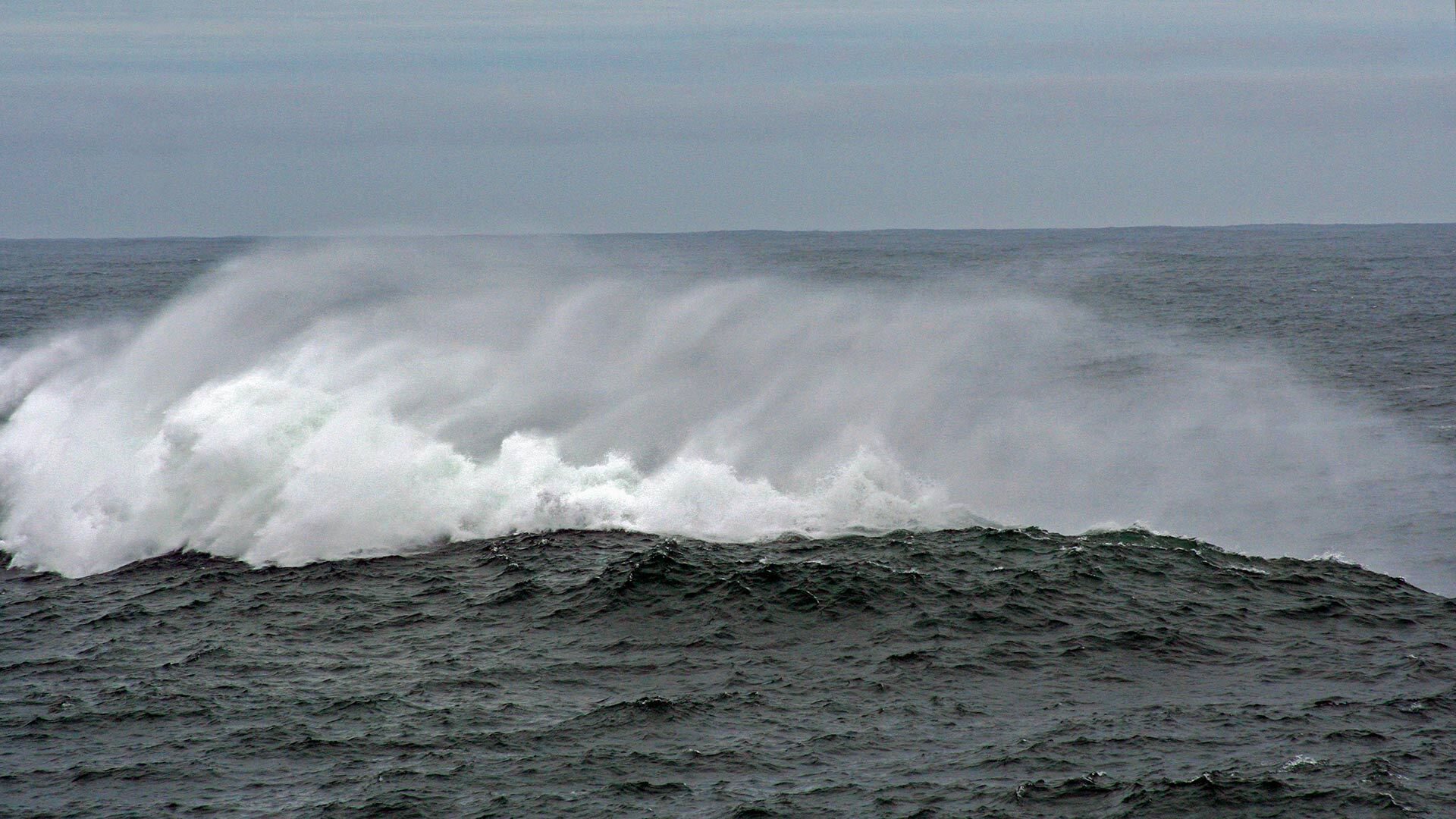- July 18, 2024
- By Robert Herschbach
Once dismissed as seafarers’ tall tales, monstrous waves that seemingly rise out of nowhere to tower over the surrounding waters are now thought to be regular culprits in the sinking of large ships.
A new tool developed by University of Maryland researchers could help provide vessels and offshore platforms with an early warning of these unusually large and unpredictable waves, known as rogue waves or freak waves.
Postdoctoral researcher Thomas Breunung and Distinguished University Professor Balakumar Balachandran, both of the Department of Mechanical Engineering, say their approach can provide up to five minutes of warning, giving oil rig workers valuable time in which to seek shelter, perform emergency shutdowns or evacuate workers. Cargo and passenger crews could use this advance time to secure their ships and maneuver them for greater safety. The tool was presented in a study published Thursday in Scientific Reports.
To engineer the new system, the two researchers trained a neural network—an artificial intelligence system that operates on similar principles to human cognition—to distinguish ocean waves that will be followed by a rogue wave from those that will not. They trained it on a data set consisting of billions of waves recorded in 14 million 30-minute-long samples of sea surface elevation measurements from 172 offshore buoys around the continental United States and islands in the Pacific Ocean.
This data set contained thousands of rogue waves, which Breunung and Balachandran then processed and compiled for training the neural networks. After the training, they used their tool to predict the emergence of rogue waves, defined as those at least twice the height of others in the area.
The UMD researchers were able to correctly predict the emergence of 75% of rogue waves one minute into the future and 73% of rogue waves five minutes into the future. In addition, Breunung and Balachandran demonstrated that the tool could be used to predict the emergence of rogue waves near two buoys at widely different depths not included within the data sets used for the network training. This suggests that the trained neural network may be able to predict rogue waves regardless of location.
According to the researchers, the accuracy and advance warning time of forecasts could be further improved by incorporating other data such as water depths, wind speeds and buoy locations. Future research could also enable the system to predict heights of upcoming rogue waves or times when they’re likely to emerge.
"While the success rates of our approach are encouraging, the utilized neural network allows us to draw only limited conclusions about the fundamental physics of rogue wave events,” said Breunung. “As researchers, we are now more motivated than ever to utilize similar approaches to gain a deeper understanding of rogue waves.
Balachandran, who is also a Minta Martin professor, said the tool is just example of how machine learning can support applications that enhance safety and well-being." Beyond rogue waves, he suggested, the team’s data-driven approach could be useful for understanding and predicting other extreme events associated with climate change and the combustion process.
